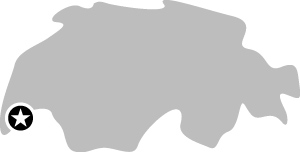Switzerland
032
CERN, Geneva, Switzerland
 46° 14Ⲡ3ⳠN, 6° 3Ⲡ10ⳠE
46° 14Ⲡ3ⳠN, 6° 3Ⲡ10ⳠE
![]()
![]()
![]()
High-Energy Physics
CERN, the European Organization for Nuclear Research, is the largest particle physics laboratory in the world and operates six particle accelerators plus the new Large Hadron Collider. Visiting CERN takes half a dayâit is simply enormous, and most of it is underground. All visits are guided tours by people working at CERN, and the exact itinerary is determined by which parts of CERN are off-limits because of ongoing work.
Typical tours include the LINAC and LEIR accelerators; the COMPASS particle detector; the AD (anti-proton decelerator), which is used to make anti-matter; the CAST and AMS experiments used to find particles coming from the cosmos; parts of the Large Hadron Collider; and/or the computing resources of CERN.
Since the creation of CERN in 1954, the laboratory has been home to the Nobel Prize winners of 1976, 1984, 1988, and 1992. CERN has also been at the forefront of high-energy physics, with the discovery of neutral currents (1973) and the W and Z bosons (1983), and ...
Get The Geek Atlas now with the O’Reilly learning platform.
O’Reilly members experience books, live events, courses curated by job role, and more from O’Reilly and nearly 200 top publishers.

